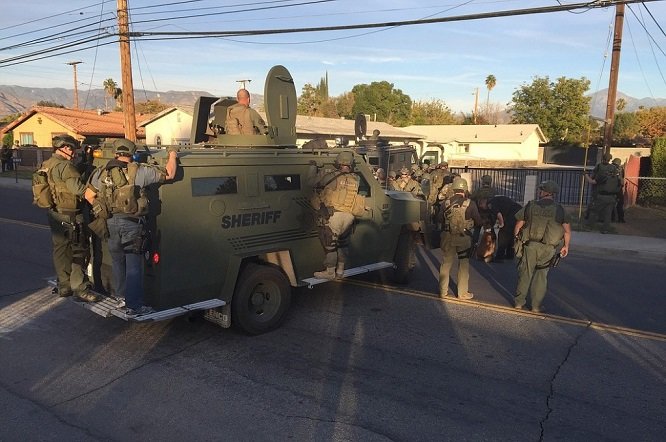"There's a lot of disconnects, and there's a lot of unknowns, and a lot of things that quite frankly don't add up," insisted attorney David S. Chelsey, who represents Farooq's family when asked by CNN correspondent Chris Cuomo how the family "could explain how he went from someone they knew and loved to someone who could do something so monstrous."
Witnesses and investigators have both described a terrorist onslaught carried out with military precision by suspects who were trained and capable. Farook and his wife, Tashfeen Malik, didn't appear to have the necessary background and skillset, according to Chelsey.
He expressed particular skepticism that Malik, who was nursing a newborn child, was suitable to carry out a depraved mission of that kind: "She was only about ninety pounds, so it's unlikely she could even carry a weapon, or wear some type of a vest, or do any of this."
The most provocative claim made by Chelsey dealt with the condition of the alleged terrorists when their bodies were found:
Where the couple was found, from what I understand, is that they were handcuffed, lying face-down in this truck, shot up.By all accounts, Farook's family is cooperating fully in the investigation.
"We sat with the FBI for three hours, and they tried to identify some characteristics or some affiliations that he might have had that have led him to act in this way, and they were totally stumped, totally frustrated," Chelsey reports. "Everyone is clueless."
According to CNN, the couple had left damaged cell phones in a trash bin on the scene. Citing unnamed "authorities," the network said that this suggested that the couple "was trying to hide their tracks, and make it impossible for investigators to see what was on their cell phones." Of course, this could have been done more easily by not bringing the incriminating cell phones with them, rather than discarding them at the scene of the massacre.
The hard drive on the couple's computer is also missing, which has resulted in a subpoena to their Internet Service Provider. A dedicated member of a terror cell would try to destroy electronic information that could incriminate co-conspirators. According to defenders of the NSA's all-encompassing electronic surveillance, Islamist radicals are being more careful to avoid leaving cyber-breadcrumbs that can be followed; merely removing a hard drive from a desktop computer wouldn't be enough.
Another oddity, according to CNN reports, is the composition of the explosives found in the couple's home: The recipe followed in making the pipe bombs does not match any of the formulas associated with al-Qaeda, ISIS, or other known terrorist groups.
According to Mustafa Kuko, director of the Islamic Center of Riverside, California, Farook regularly attended worship services until about two years ago.
"We were all shocked" by the news that Farook had allegedly murdered 14 people, Kuko told the Los Angeles Times. That shock was compounded by news that one of the victims in the attack, a social worker who survived multiple gunshot wounds, also attends the mosque.
"It's very likely that they knew each other, and Farook must have known she was there," Kuko points out. "It just doesn't make any sense. Why would he do this?"
The answers to those insistent questions may cause Farook's family and friends to revise their assessment of a man they considered to be peaceful, well-adjusted, and sincerely friendly. Those answers might also require significant revisions in the emerging official narrative of the atrocity in San Bernardino.




to the use of post hypnotic suggestion as in the Manchurian Candidate and the real-life mental manipulation of an individual in a university setting such as the participatory experiment that produced the damage done to Ted Kazinski.
Recall that when the US combat sharpshooter was murdered, the police/FBI/CIA secluded the individual for days which may have been to unwrap any post hypnotic suggestions that led to the shooting.
It is not beyond the realm of possibility that such occurs.